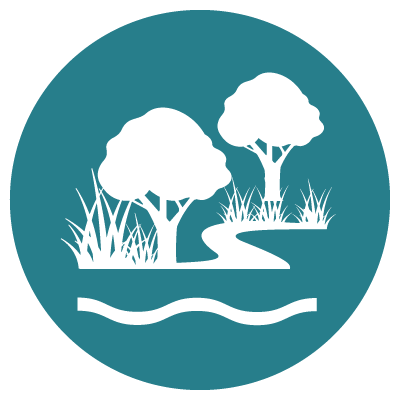Fish play an important role in waterways, wetlands and estuaries
Fish are valued both for their role in healthy ecosystems and for recreational and cultural fishing. Fish are usually near the top of the aquatic food chain and provide food for people and some birds.
Species such as Macquarie perch, Murray cod and river blackfish are highly valued by the fishing community including Traditional Owners. Fish species are diverse and include freshwater and estuarine species that inhabit rivers, estuaries and wetlands. Some fish live part of their life cycle in fresh water and part in salt water and are known as diadromous species.
Fish populations are measured through monitoring surveys
Fish populations are measured through live trapping, requiring the fish to be caught, identified and measured, before being returned to the waterway or wetland. This can be done through a range of methods for different species and size of fish.
An emerging and complementary monitoring method for fish is the use of environmental DNA (eDNA). Small traces of DNA from animals in the water (e.g. scales, mucous, faeces, skin), can be analysed from water samples to identify species that are present. Whilst eDNA has many advantages, it won’t completely replace the need for traditional surveys, that provide additional information such as health, sex, age, and genetic integrity of fish.
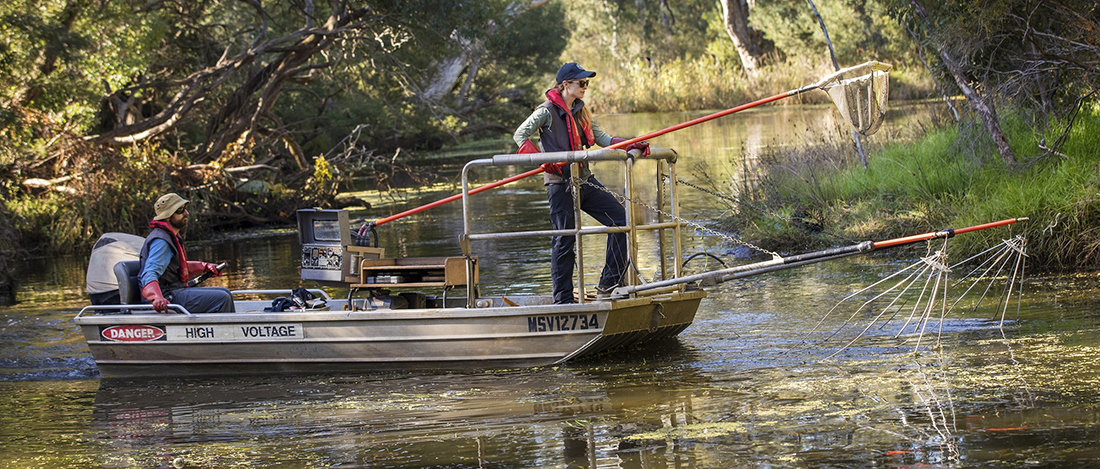
Priority fish monitoring
A number of priority species for intensive fish monitoring have been identified. These species cover a variety of habitats in the region – river, estuarine and wetlands - and are made up of a range of threatened species and other key species that are important in the region.
Priority fish species for the region include: Macquarie perch, Australian grayling, Australian mudfish, River blackfish, Yarra pygmy perch, Southern pygmy perch, Dwarf galaxias, Common galaxias, Short-finned eel, Short-headed lamprey, Tupong, Black bream, Estuary perch, Blue Spot Goby, Pale mangrove goby.
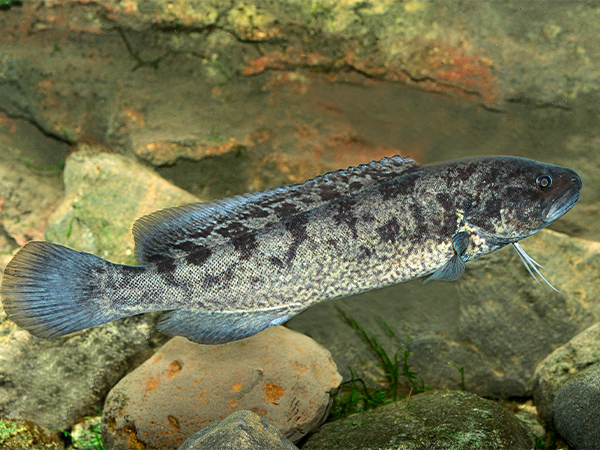
River blackfish (Gadopsis marmoratus)
River blackfish are found in cool, flowing, gravel streams, with plenty of rock and large wood. They are bottom dwellers and feed on small crustaceans and macroinvertebrates in the leaf litter and debris.
River blackfish abundance in recent years has been affected by increased siltation of waterways due to changed land use, clearing of debris, changed flow regimes and in some cases competition from introduced fish species such as trout. River blackfish are an important species to Traditional Owners.
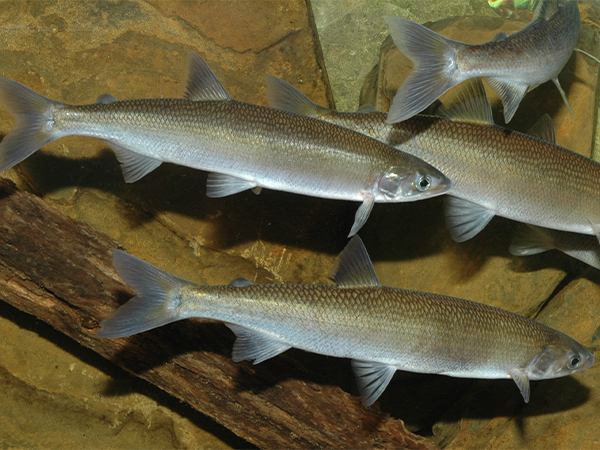
Australian grayling (Prototroctes maraena)
Australian grayling prefer freshwater rivers and streams with cool, clear water, gravel beds and pool riffle sequences. They are migratory, moving downstream to the top of estuaries to spawn, before returning upstream to fresh water. Eggs and larvae drift out to sea and juveniles move between freshwater and the sea.
Grayling are heavily impacted by fish barriers as they rely on uninhibited access between freshwater and the sea for survival. They also rely on increases in flow as a migration queue.
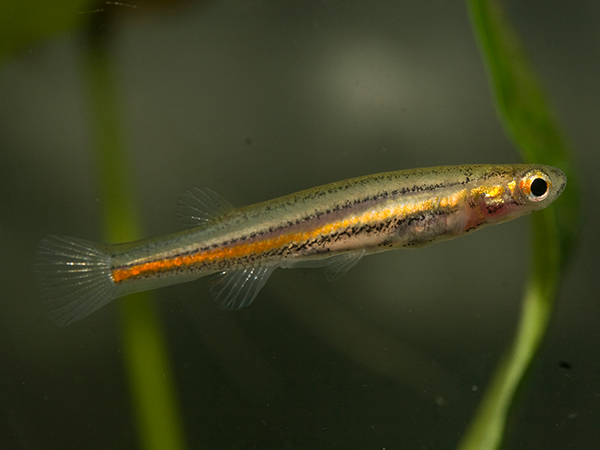
Dwarf galaxias (Galaxiella pusilla)
Dwarf galaxias prefer lowland, shallow habitats that are well-vegetated and slow-flowing such as swamps, drains and backwaters. Some of these habitats may dry out in summer, so connectivity to source sites where they occur permanently is important.
Dwarf galaxias feed on invertebrates and attach eggs to the underside of stems, leaves, rocks or woody debris. The main threats to dwarf galaxias are modifications to drainage, loss of habitat and reduced flooding to recolonise habitats.
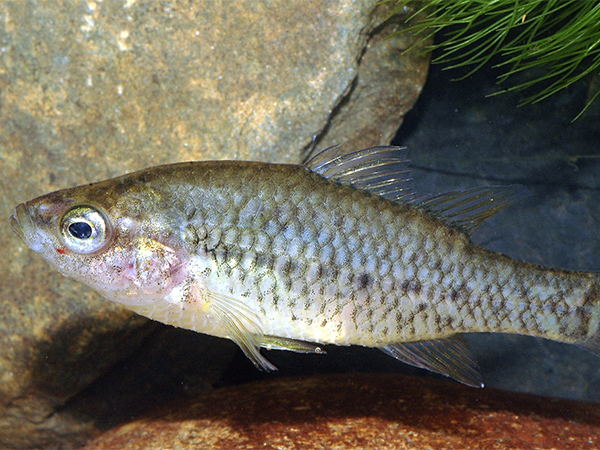
Yarra pygmy perch (Nannoperca obscura)
Yarra pygmy perch prefer slow-flowing waters with lots of aquatic vegetation, such as lakes, ponds and slow-flowing rivers. They feed on insects and small crustaceans. Reduced flooding reduces connectivity with wetland habitats and the ability to recolonise these habitats. They are also impacted by stock access through declines in water quality.
Populations are fragmented and they often have to compete with other species such as gambusia and brown trout. Yarra pygmy perch are listed as Vulnerable in Victoria.
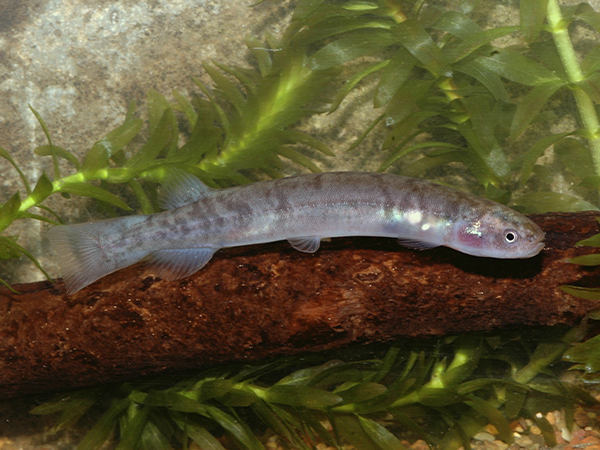
Australian mudfish (Neochanna cleaveri)
Australian Mudfish adults live in freshwater environments in swampy sites, drains and semi-permanent waters with abundant aquatic vegetation. They are known to be able to tolerate short periods without water by burrowing into mud or sheltering under logs. Eggs are laid in winter and washed out to sea and in spring juveniles begin the migration back to freshwater.
Loss of shallow freshwater wetlands that are connected with coastal streams is considered to be a major threat to this species.
Fish baseline condition and long-term targets
2018 baseline: fish survey data was used alongside environmental characteristics (e.g. vegetation, flow regime, etc.) to inform the development of a habitat suitability model, which was the basis for measuring current condition.
2068 target: the target represents where we want to be in 50 years and is what can be achieved with an increase in coordinated, collaborative and prioritised effort to address managing fish barriers, vegetation, urban stormwater and pollution, and water regime.
Number of waterways in each catchment by fish score
Hover, click or tap (on mobile) the charts below to view more information.
Baseline and trajectories in Rivers
Baseline and trajectories in Estuaries
Baseline and trajectories in Wetlands
Even with the existing effort and resources of waterway managers, agencies and community, it will be extremely difficult to maintain all the waterway values everywhere. This knowledge provides a definitive call to action, and confirms that aligned, increased and collaborative efforts will be needed over the next 10 years.
Fish populations will take some time to respond to environmental changes that are brought about by achieving the performance objectives. It may not be possible to detect improvements in fish over the 10-year timeframe of the strategy. However, evaluation and reporting of fish data will be undertaken to inform progress at mid-term and towards the end of the Healthy Waterways Strategy.
For more information on the fish metrics and the monitoring program rationale see the Healthy Waterways Strategy Resource document and the Monitoring and Evaluation Plans for Rivers, Wetlands and Estuaries.
Conceptual models show the links between waterway conditions and fish
Conceptual models are a summary diagram that simply illustrate which environmental conditions are most important for the health of fish communities. In the diagram below they also show which conditions are most affected by climate change and urbanisation. Management actions that can improve environmental conditions are linked via box colours.
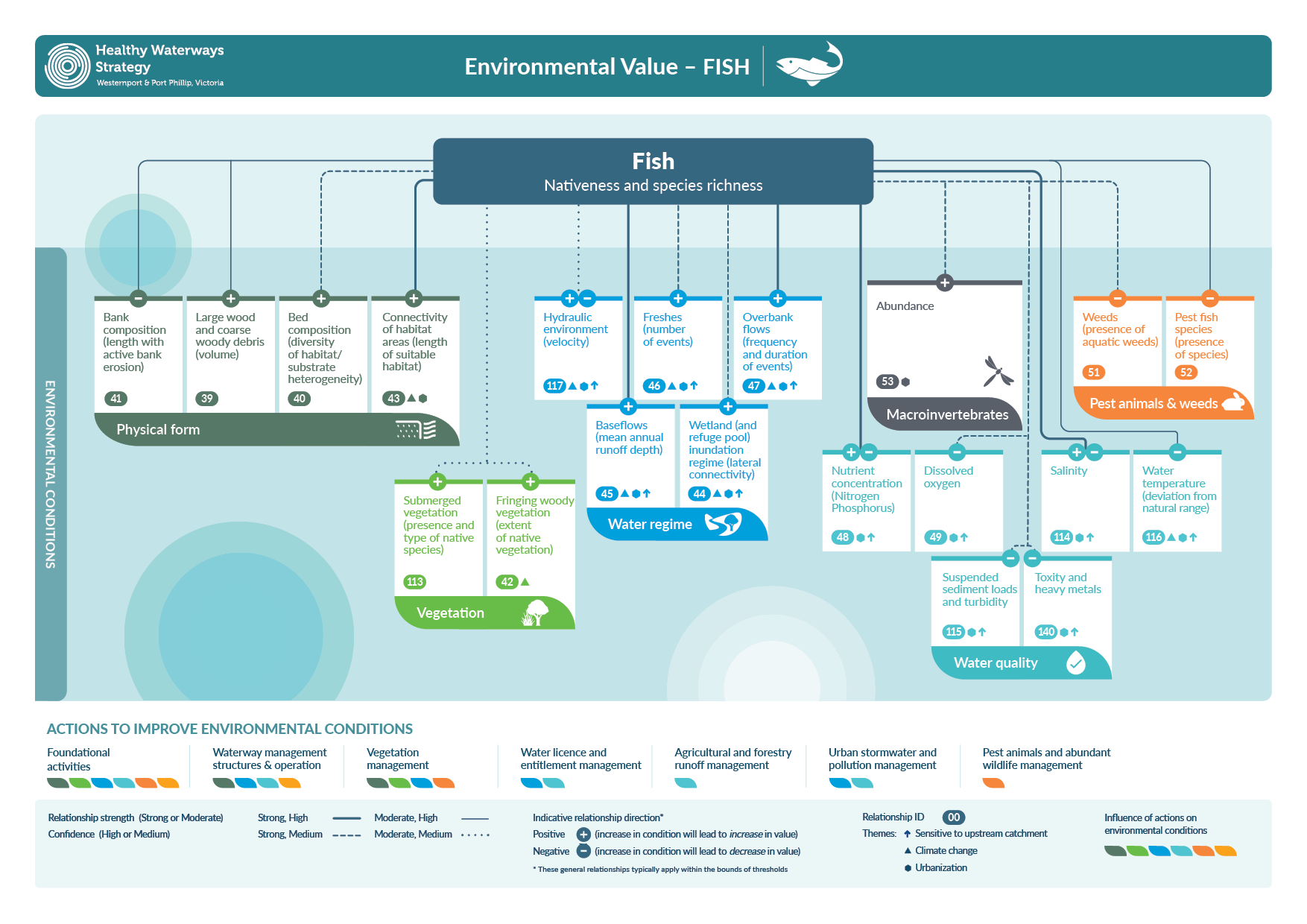
Download the fish conceptual model (PDF 368 KB)
More information on the conceptual models can be found in the Healthy Waterways Strategy Resource Document.
Changes in waterway conditions can have a big impact on fish health
Physical form
Fish are impacted by fine sediment inputs so bank stability is important. Fine sediments in the water can clog gills and make it difficult for fish to hunt for their prey. Sediments can reduce growth of aquatic vegetation that some fish feed on and impact breeding by smothering fish eggs.
Connectivity along waterways is important for fish breeding. Instream barriers such as weirs, dams and other infrastructure can reduce migration and isolate populations, resulting in low genetic diversity and eventual local extinction. Maintaining deeper pools provides refuge for fish during drought.
Physical form is considered under the habitat condition. See waterway conditions - habitat to see how physical form is monitored.
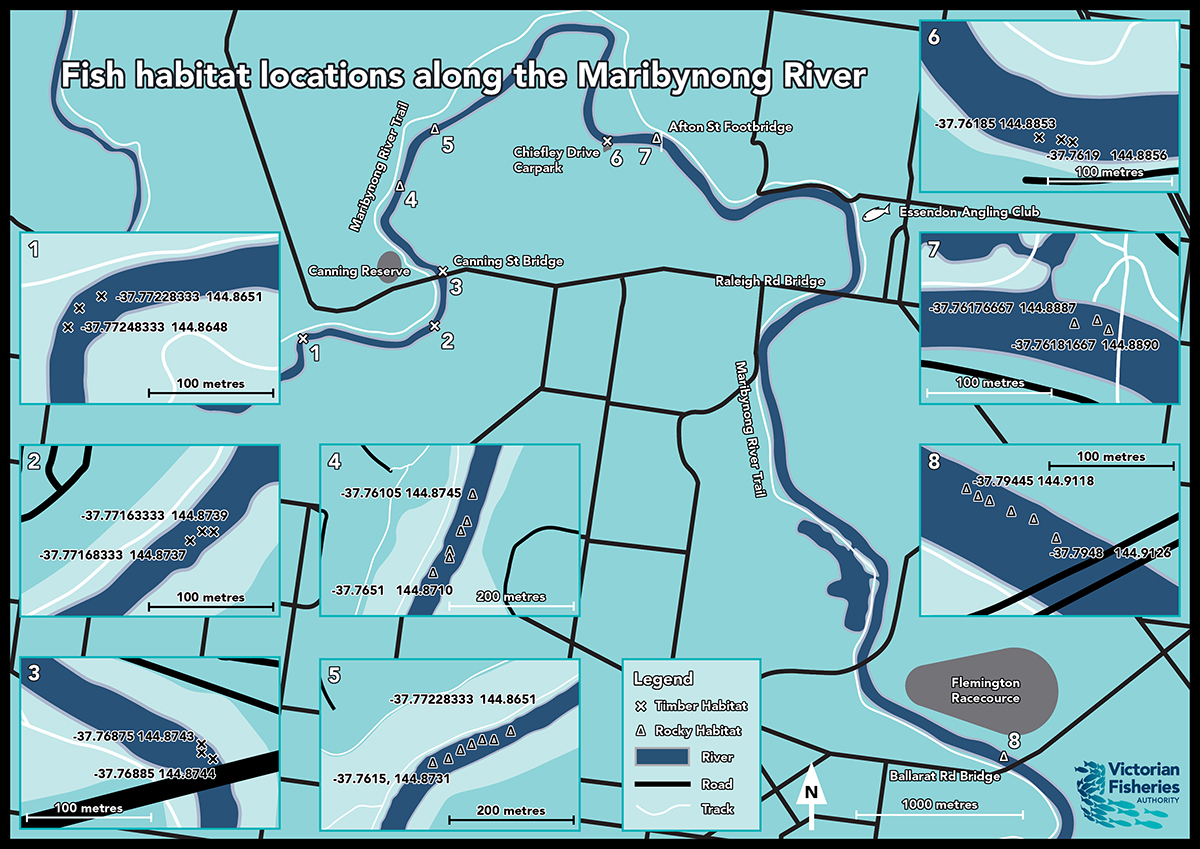
2022 Case study: Checking in to the Fish Hotel
'Fish hotels' improve river health by reintroducing complex woody habitat into the waterway to benefit native fish and provide new recreational fishing opportunities. A partnership of key agencies has been implementing fish hotels in the Maribyrnong River Estuary.
Vegetation
Large instream logs and submerged vegetation provide habitat diversity, organic matter and a place for biofilms and algae to grow on, providing a food source for fish or their macroinvertebrate prey. Instream and fringing vegetation provides cover from predators such as gambusia and shading to regulate water temperatures.
See waterway conditions - vegetation for more details on how these conditions are monitored.
Water for the environment
The presence of water provides habitat for fish. Pulses of water flush the river, move sediment, provide temporary additional habitat and support vegetation. Larger flows also maintain the shape and structure of the riverbed and banks. Diversity in the speed and volumes of flow is important for fish. There are several species that spawn and migrate in response to high flows or ‘freshes’ after periods of low flow. Some floodplain wetland species also need overbank flows to help distribution and to inundate their wetland homes.
See waterway conditions - water for the environment for more details on how the water regime is monitored.
Macroinvertebrates
Some fish rely on macroinvertebrates as their primary food source. Conditions that promote high abundance and diversity of macroinvertebrates are also favourable for fish.
See key value - macroinvertebrates for more details on how they are monitored.
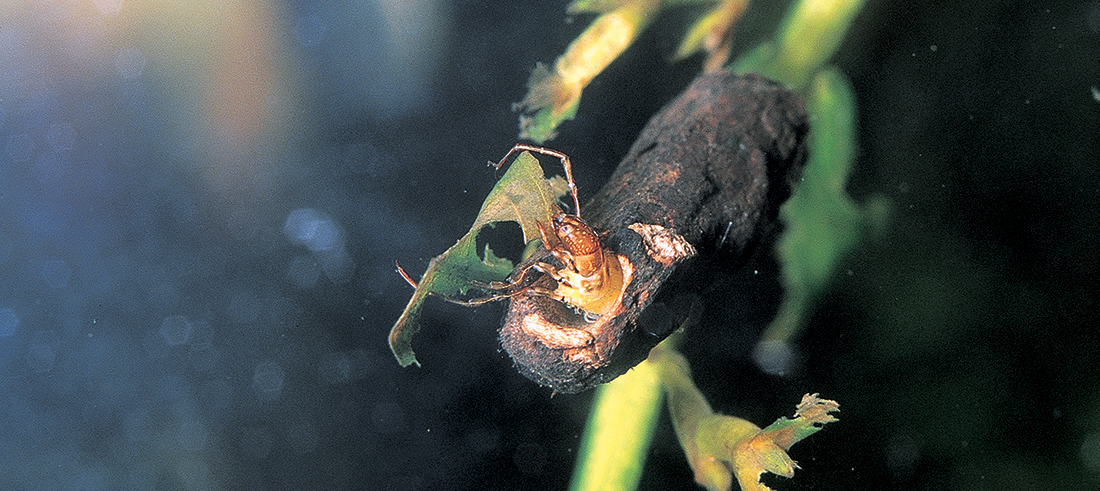
Water quality
Water quality has a significant impact on fish and their macroinvertebrate prey. Land clearance, agricultural run-off, industrial discharge, and urbanisation that result in higher salinity, nutrients, suspended sediment and turbidity impact on fish. Turbid waters have reduced light meaning algae and aquatic plants can’t grow and fish can’t see to hunt. Sediment can also smother fish eggs. Toxicants and heavy metals in stormwater are known to be detrimental to fish biodiversity. Waters rich in nutrients can have periods of very low oxygen that can lead to significant fish kills.
See waterway conditions - water quality and stormwater for more details on how these conditions are monitored.
Pest animals
A range of pest and exotic fish species impact on native fish through direct predation, competition for food and impacts on other environmental conditions, such as stirring up sediments or removal of vegetation. Gambusia and European carp are also known to be less susceptible to toxicants than native species so can thrive in more urban environments. Introduced trout can impact native species through competition for resources.
Actions that improve the condition of rivers, wetlands and estuaries for fish
There are a range of actions to improve fish values in rivers, wetlands and estuaries. The heading for actions below aligns with the terms in the annual report card for ease of reference.
Mitigate threats to physical form
Maintaining erosion control structures, ensuring fish passage over these and other barriers, and maintaining connectivity to floodplain wetlands all increase the extent of suitable fish habitat.
In the strategy actions such as removing barriers to fish migration and maintaining existing fishways will help support fish populations.
View fishways and barriers in the Strategy map.
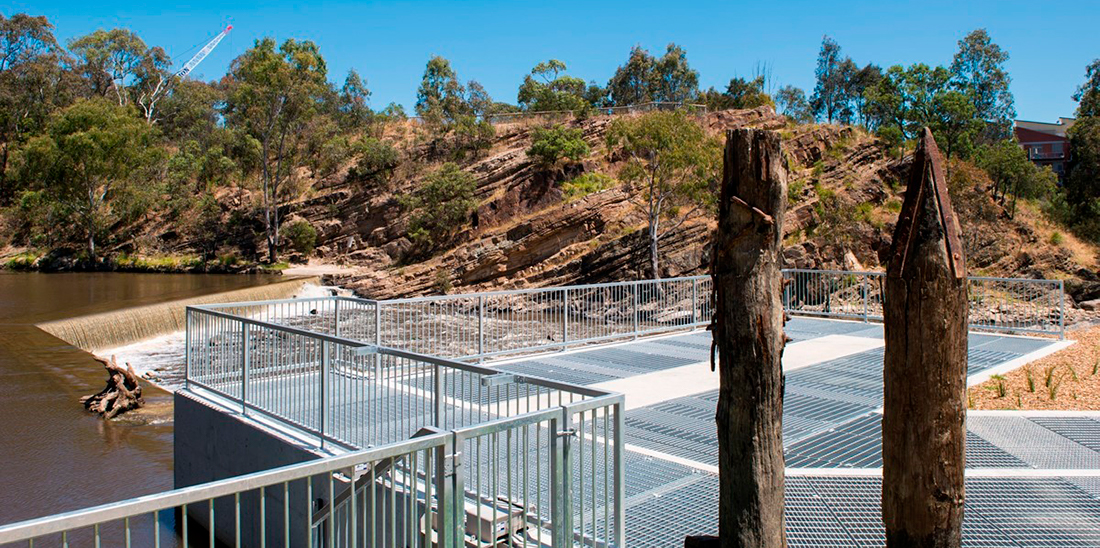
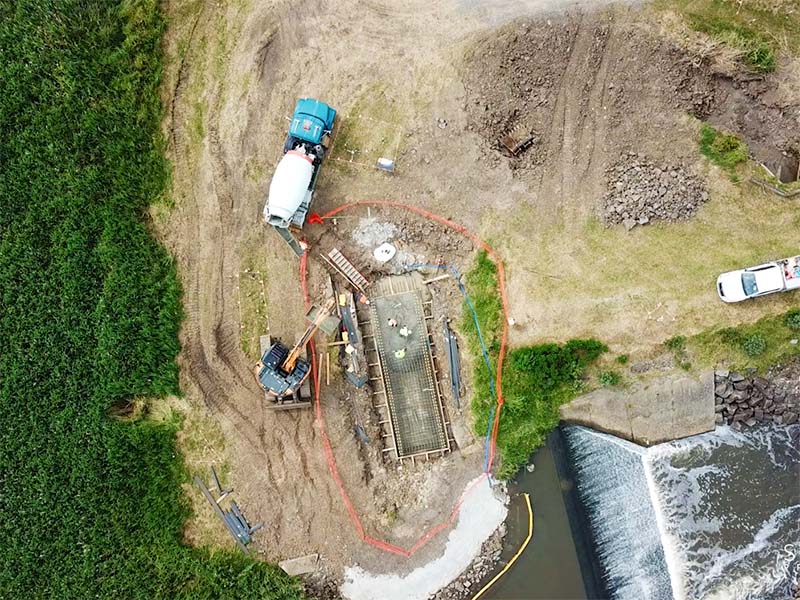
2021 Case study: Improving fish passage in Dandenong Creek
A new fishway has been built to support native fish to swim more freely between Port Phillip Bay and the waterways of the Dandenong Creek catchment.
Establish buffers and maintain vegetation quality
Protecting existing high value vegetation and establishing continuous vegetation buffers along priority river reaches supports fish. Protecting mature trees and overhanging branches is especially important to provide bank stability, large woody debris inputs, shading and shelter from predators.
In the Strategy, actions such as maintaining and establishing native vegetation along rivers and around wetlands will support fish populations.
Improve water for the environment
Improving the water regime for fish populations involves securing water entitlements in regulated systems to deliver environmental flow requirements - particularly in times of drought. Delivering the water entitlement at appropriate times of year can trigger upstream migration. In unregulated systems, improving the water regime includes ensuring fish needs are considered when establishing bans and restriction on when water can be taken from streams.
In the strategy, delivering environmental water at the right time to assist with signalling migration will benefit fish species such as Australian grayling. Also, mapping and monitoring key drought refuge areas and ensuring plans consider the needs of fish in these reaches will support critical habitat.
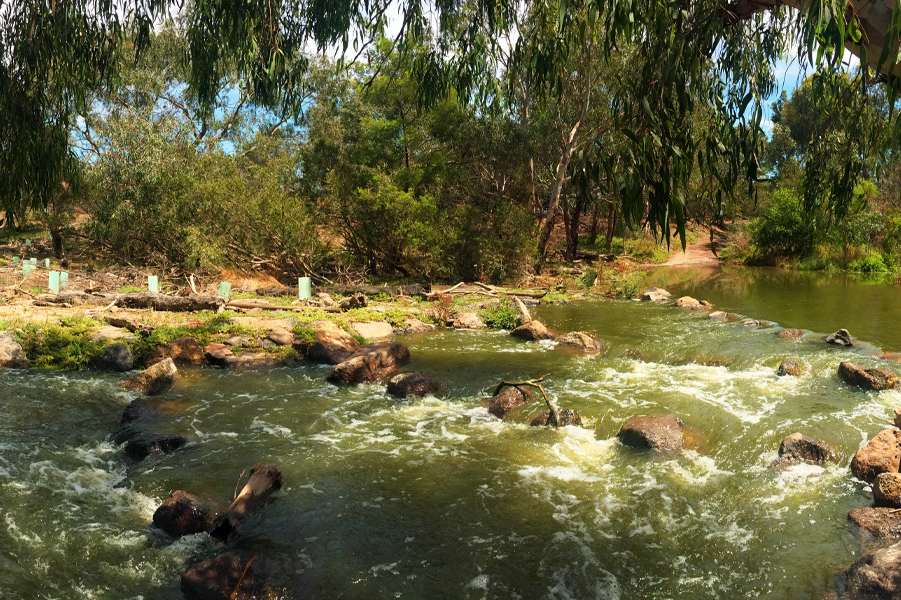
2020 Case study: Environmental water impacts on the Lower Werribee River’s fish populations
Fish in the lower reaches of the Werribee River are benefiting from the delivery of environmental water to help provide cues for migration.
Improve water quality
Urban stormwater and pollution management along with agricultural and forestry runoff management improves water quality for fish. This includes identifying sources of pollution, managing run-off from rural land and unsealed roads, and establishing wetland vegetation buffers.
In the strategy actions such as implementing the rural land program to reduce nutrient and sediment inputs to waterways and wetlands will support fish populations.
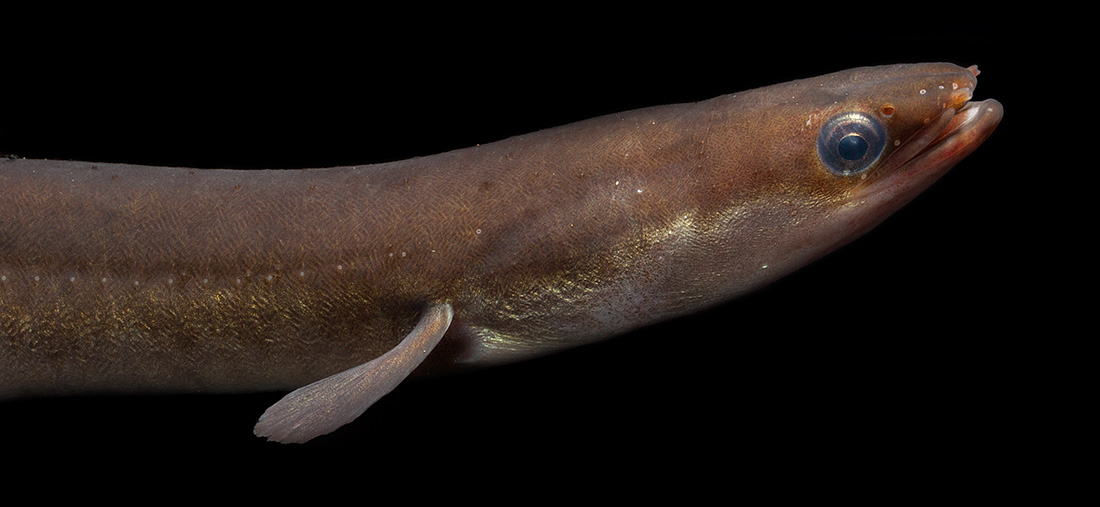
2022 Case study: Eels of Dandenong Creek
The story of the short-finned eels (Anguilla australis) in Dandenong Creek, describing their amazing lifecycle and the importance of eels to Traditional Owners, as well as how urbanisation and pollution impact them.
Manage pest animals and wildlife
Appropriate management of exotic fish supports fish values. This is done through on-ground management, monitoring and research.
In the strategy actions such as managing carp and gambusia by manipulating the water regime and structure of key wetlands will support dwarf galaxias.
